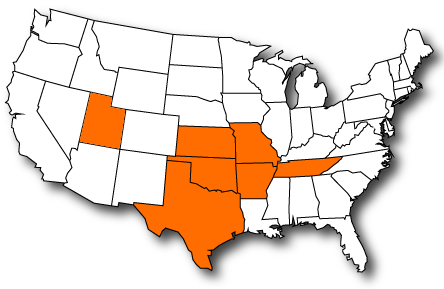Life insurance is an essential financial tool that provides security and peace of mind to individuals and their families. One of the most versatile and adaptive forms of life insurance is flexible premium life insurance. This type of policy offers policyholders the ability to customize their coverage and premium payments to suit their unique financial circumstances and goals. In this comprehensive guide, we will delve into the world of flexible premium life insurance, exploring its features, benefits, and considerations.
Understanding Flexible Premium Life Insurance
Flexible premium life insurance, often referred to as universal life insurance, is a type of permanent life insurance that distinguishes itself by its adaptability. Unlike traditional whole life insurance, where premium payments remain fixed, flexible premium life insurance enables policyholders to adjust both the premium payments and the death benefit throughout the life of the policy. This flexibility allows individuals to align their coverage with their evolving financial situation.
Key Features of Flexible Premium Life Insurance
- Adjustable Premiums: The defining feature of flexible premium life insurance is the ability to modify premium payments. Policyholders can pay more or less than the scheduled premium, depending on their financial capacity.
- Cash Value Accumulation: Part of the premium paid is allocated to a cash value account, which earns interest over time. This account can be used to cover premiums, withdraw cash, or borrow against it.
- Death Benefit Flexibility: Policyholders can adjust the death benefit according to their changing needs, whether it’s to increase coverage for a growing family or reduce coverage during retirement.
- Investment Options: Some flexible premium life insurance policies offer investment choices, allowing policyholders to potentially increase the cash value through market-linked investments.
- Tax Benefits: The cash value accumulation within the policy typically grows on a tax-deferred basis, providing potential tax advantages over time.
Advantages of Flexible Premium Life Insurance
Flexible premium life insurance offers a range of advantages that make it a popular choice for those seeking tailored life insurance solutions.
- Adaptability to Life Changes: Life is unpredictable, and financial situations can fluctuate. Flexible premium life insurance provides the necessary adjustments to keep coverage relevant and affordable. Whether you’re facing financial hardship or newfound prosperity, your policy can be modified to suit your circumstances.
- Savings and Investment Opportunities: The cash value component of flexible premium life insurance can serve as a source of savings. It accumulates over time, potentially allowing you to access funds for emergencies or other financial needs. Some policies even offer investment options, which can lead to more significant cash value growth.
- Tax Benefits: The tax-deferred growth of the cash value account is an attractive feature of this insurance type. Policyholders can enjoy tax benefits by delaying the payment of taxes on the interest earned within the policy until withdrawal or policy maturity.
- Estate Planning: Flexible premium life insurance can be a valuable tool in estate planning. By providing a death benefit to beneficiaries, it can help cover estate taxes and ensure the smooth transfer of assets to heirs.
Considerations and Challenges
While flexible premium life insurance offers a host of benefits, it is essential to understand the potential challenges and considerations.
A. Cost Variability
The flexibility to adjust premiums comes with a trade-off: if you pay less than the originally projected premiums, the cash value may be depleted faster, leading to a risk of policy lapse. Conversely, consistently paying more may lead to higher expenses in the long term.
B. Investment Risks
Policies that offer investment options may carry some level of risk. Market-linked investments can result in gains, but they can also lead to losses. It’s crucial to understand the risk tolerance and investment strategy that aligns with your financial goals.
C. Complexity
Flexible premium life insurance policies can be complex, with numerous variables to consider. Policyholders should work closely with a financial advisor to make informed decisions.
D. Policy Lapses
Failure to maintain a sufficient cash value balance or pay adequate premiums can result in a policy lapse, causing the loss of coverage and cash value. Avoiding lapses requires diligence in monitoring and managing the policy.
How to Choose the Right Flexible Premium Life Insurance Policy
Selecting the right flexible premium life insurance policy involves careful consideration of your financial objectives, risk tolerance, and long-term goals. Here are some steps to guide your decision-making process:
A. Assess Your Financial Situation
Evaluate your current financial status, including income, expenses, debts, and savings. This assessment will help you determine how much you can comfortably allocate to life insurance premiums.
B. Set Clear Objectives
Define your goals for life insurance. Do you primarily want financial security for your family, tax-advantaged savings, or a combination of both? Understanding your objectives will guide your policy selection.
C. Work with a Knowledgeable Advisor
Consult with a qualified financial advisor or insurance agent who specializes in life insurance. They can help you navigate the various options and tailor a policy that suits your unique needs.
D. Compare Policies
Gather quotes and compare policies from different insurance companies. Consider factors like premium rates, policy fees, investment options (if applicable), and the company’s financial stability.
E. Review the Fine Print
Carefully read and understand the policy contract. Pay close attention to the terms and conditions, including premium flexibility, cash value growth, and any potential fees or charges.
F. Regularly Review Your Policy
Life insurance is not a one-and-done decision. Periodically review your policy to ensure it continues to align with your goals and make adjustments as needed.
Conclusion
Flexible premium life insurance provides a dynamic and adaptable solution for those seeking a life insurance policy that can evolve with their changing circumstances. It offers the flexibility to adjust premiums, death benefits, and access to cash value, making it a versatile tool for financial planning.
However, it is essential to carefully consider the benefits and trade-offs, consult with experts, and regularly review your policy to ensure it remains in line with your financial goals. By taking these steps, you can harness the power of flexible premium life insurance to provide lasting financial security for yourself and your loved ones.
Ready to explore flexible premium life insurance options tailored to your financial situation? Contact G&G Independent Insurance for personalized guidance today.


